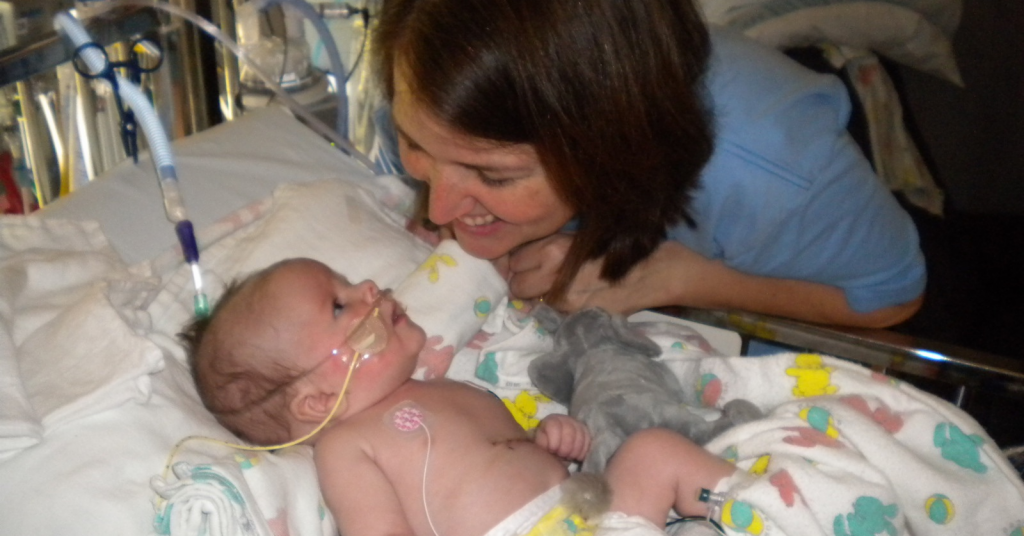
In 2009, during Laurina Barker’s 20-week ultrasound, she and her husband Ryan received news that no expecting parents want to hear.
“The technician turned to me and said something looked different and that they would have my doctor call me,” said Barker.
A couple of days later, the Barkers would learn their baby had congenital diaphragmatic hernia (CDH), a rare birth defect where a baby’s diaphragm does not form completely. This leaves a hole between the abdomen and chest allowing their organs, most often their intestines and liver, to slip through the hole and up into the chest.
With the organs from the abdomen in the chest, the lungs do not develop normally, causing serious breathing problems as soon as they are born. Babies with CDH need immediate care after birth to stabilize their breathing and get them healthy enough to undergo reparative surgery. When CDH is diagnosed prenatally, plans for these life-saving measures can be made in advance.
“When I was 22 weeks along, we were referred to Seattle Children’s for a consult with the Prenatal Diagnosis and Treatment team,” said Barker. “We felt really loved and cared for — they explained everything so well and prepared us for what was to come.”
Hanging on to her son’s life
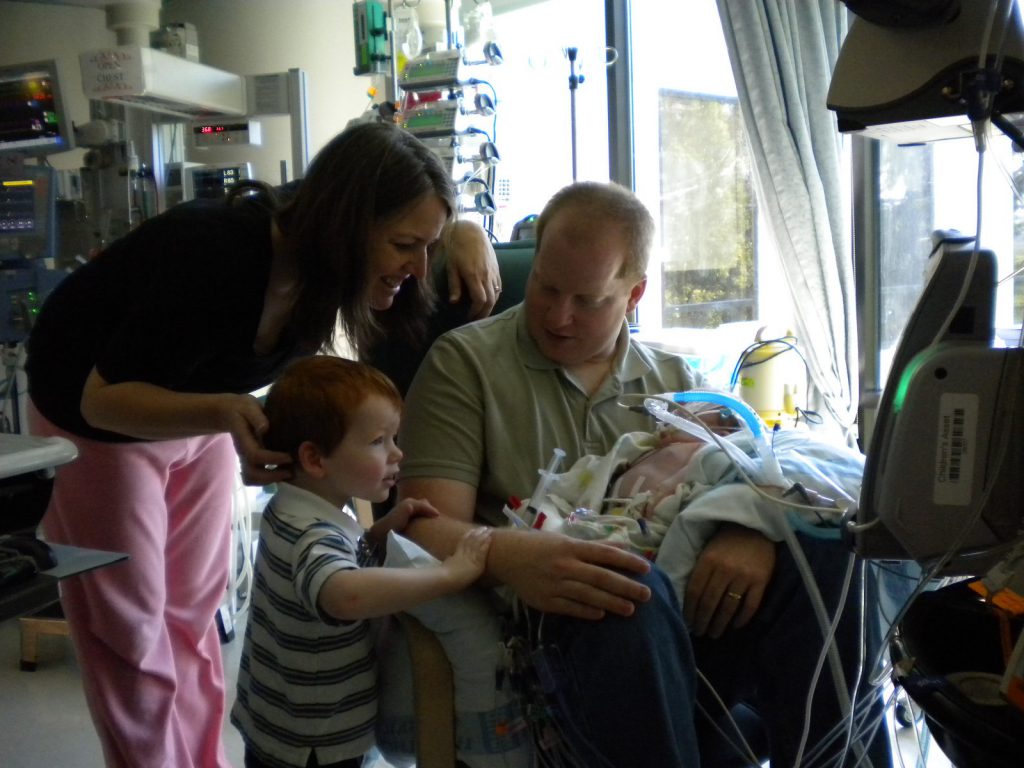
That June, Barker’s son Matthew was born.
“As soon as they pulled Matthew out, he needed to be intubated — so I didn’t even get a chance to hold him,” said Barker. “I remember someone advised me to have at least one person present in the delivery room to take pictures immediately after he was born because it would likely be months until we would see him not hooked up to tubes and machines to keep him stable.”
Within just a few hours of his birth, Matthew was transported as planned to Seattle Children’s Neonatal Intensive Care Unit (NICU), where Barker describes him as having been the ‘sickest, biggest baby in the NICU’ at 7-and-a-half pounds.
“They were able to keep him relatively stable for the first 72 hours of his life,” said Barker. “But then his oxygen levels quickly began to drop and his carbon dioxide levels became dangerously high. It was possible he wouldn’t survive, but we knew he had a fighting spirit and put all of our trust in his surgeon and the rest of the care team to save his life.”
Dr. John Meehan, a surgeon at Seattle Children’s who has cared for Matthew since the very beginning of his life until now, says it is common for babies with CDH to remain stable for the first 72 hours, however, because their lungs are small and underdeveloped, babies with CDH have high blood pressure in their lungs, otherwise known as pulmonary hypertension.
“In pulmonary hypertension, blood vessels in the lungs cannot expand enough to receive blood coming from the heart, which can eventually cause heart failure without proper treatment,” said Meehan. “Because Matthew had a severe form of CDH, he needed Extracorporeal Membrane Oxygenation, or ECMO.”
ECMO is a form of life support used to pump oxygenated blood when a patient’s heart or lungs fail to function properly or need to rest.
Generally, the survival rate of infants with CDH is between 60 to 70 percent. However, the survival rate for those infants requiring ECMO is 50 percent.
“Overall survivability of CDH has improved since ECMO was put in place several decades ago,” said Meehan. “This has made an enormous impact with getting our patients to the point where they can undergo repair surgery. Thanks to ECMO, better ventilators, and a better understanding of pulmonary hypertension, kids like Matthew are able to make it.”
Within just a few hours of being on ECMO, Barker saw a significant improvement in Matthew.
“He was looking like a different baby,” said Barker. “During those 13 days of being on EMCO, his health gradually improved which was amazing to watch.”
The day after Matthew came off ECMO was the first time Barker would hold her baby son in her arms.
“I finally got to hold him when he was 18 days old,” said Barker. “It was an incredible bonding experience for our family. After all this time of seeing Matthew amidst intensive life support, his brother Ethan finally got to experience a ‘normal’ family moment. Even though he was still hooked up to the ventilator, it was such a comfort for Ethan to see us finally hold his baby brother.”
Repair, recovery and relief
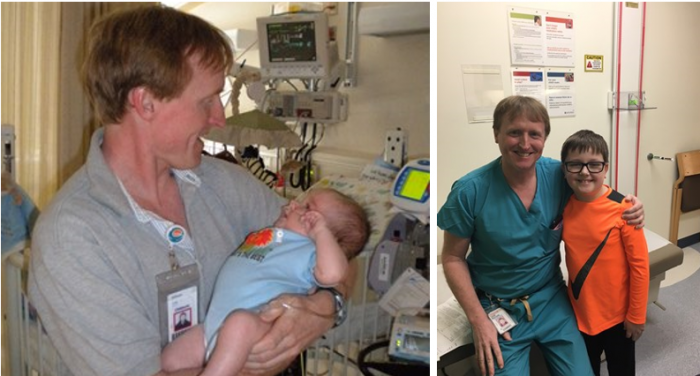
When Matthew was nearly one month old, his health had improved to where he could undergo surgery to repair the defect.
“There are different surgical options that help move organs back into the abdomen and close the hole in the diaphragm, and it all depends on the size of the hole which varies from one patient to the next,” said Meehan. “Matthew had a very large defect — he had between one and one-and-a-half centimeters of existing diaphragm, in other words, it was almost non-existent, so we didn’t have nearly enough tissue to sew it closed. In his case, we went for a patch repair which uses a combination of synthetic materials to cover up the hole and serve as a prosthetic diaphragm.”
The patch itself was designed by a surgical team at Seattle Children’s and has the highest success rate reported in medical literature, and as a major referral center in the Pacific Northwest region for CDH, Seattle Children’s Pediatric Surgery team is one of the most experienced in the nation and treats about 15 babies each year with this rare condition.
“After his surgery, I saw Matthew improving each day,” said Barker, “At 39 days, he was finally taken off the ventilator and shortly after, released from the NICU to the surgical floor, which was such a relief.”
With a few more weeks of observation to make sure Matthew’s recovery was on track, the Barkers were prepped and ready to take him home for the first time after 63 days in the hospital.
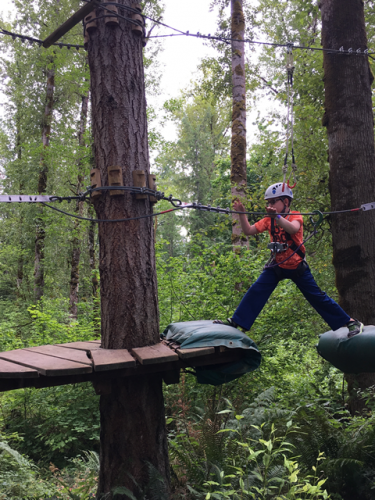
“I knew there might be more challenges ahead with Matthew’s health,” said Barker. “But I was confident that we were ready to face them because of Seattle Children’s and all of the care they provided to us up until the very point we were ready to go home.”
Matthew is now a healthy 9-year-old with an energetic and happy spirit.
“He is thriving today, thanks to the incredible care we received at Seattle Children’s over the last nine years,” said Barker. “Matthew is active, adventurous, intelligent, and passionate. He likes to swim, play basketball, and tackle obstacle courses. He also loves robots, racecars, and playing with his brother Ethan.”
Meehan has enjoyed watching Matthew grow into the kid he is today, and has even become a close friend to the family.
“I’ve been able to see the amazing family support Matthew has,” said Meehan, “and due to that incredible support, it’s been exciting to watch him grow through the years. He is such a funny kid with a great sense of humor and positive attitude.”
Giving back to where it all started
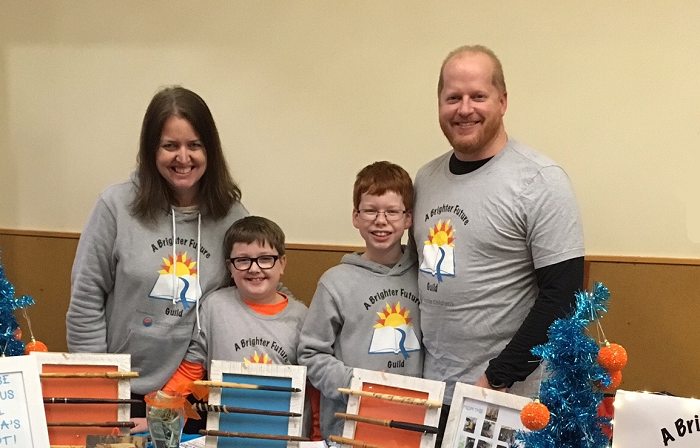
Inspired by Matthew’s journey, the Barkers knew they wanted to give back to the place where their son’s life was saved.
“The experience really shaped who we are as a family,” said Barker. “The boys have always wanted to support the wonderful work of the hospital. We had a few toy drives for the Child Life Department when they were younger and we recently felt like they were ready to take their desire to give back to the next level.”
In March of last year, the Barkers decided to form a guild to raise money for Seattle Children’s uncompensated care program.
“A Brighter Future Guild has grown to a total of 43 members, including 20 junior members who are between 5 and 12 years old,” said Barker. “The kids are very active in our fundraising efforts; for example, many will have birthday parties where they ask for no gifts, but rather direct donations to the guild. They have also had several very successful lemonade stands this summer.”
Another key aspect to their fundraising includes donating all proceeds from the sales of handmade wooden wands and superhero capes that the guild brings to local events.
“Matthew’s grandpa helps the boys carve the wands using a variety of repurposed wood he finds or dowels he purchases,” said Barker, “and several guild members help sew and assemble the capes.”
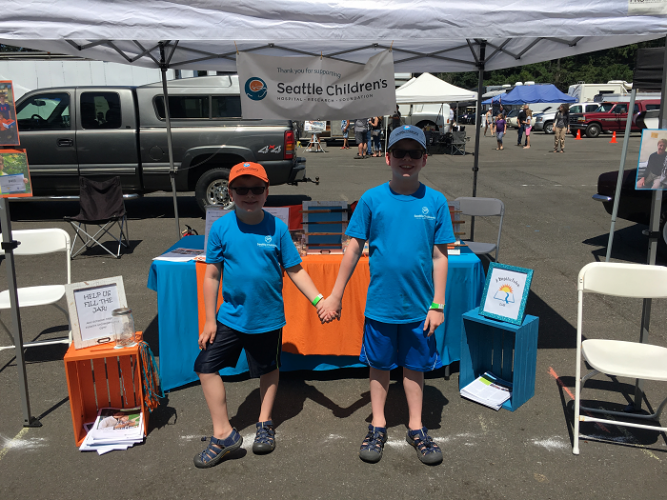
They have raised over $20,000 for uncompensated care, and that number continues to rise as Matthew and the other young guild members’ enthusiasm for philanthropy strengthens and the guild grows. They have set an ambitious fundraising goal of $100,000 by the end of 2020.
“We hope to cultivate a new generation of young people that have a desire to be philanthropic now and in the future,” said Barker. “It’s wonderful to see how much these kids have raised in such a short amount of time — it’s a testament to the dedication of our junior members and we can’t wait to see how bright the future will be for our guild.”
Barker also can’t wait to see what lies ahead for Matthew. “Seeing how much fight and determination he’s had since the day he was born, I know he will be a force to be reckoned with. He will continue to inspire others and I have no doubt he can overcome anything that stands in his way.”
It Starts With Yes: The Campaign for Seattle Children’s is a fundraising campaign with a bold vision to ensure that more families can count on hope, care and cures — now and into the future.
Our guilds, like A Brighter Future Guild, always rise to meet the needs of families, and through It Starts With Yes, we are calling on everyone to continue that good work for generations to come.
Resources:
- Congenital Diaphragmatic Hernia
- Prenatal Diagnosis and Treatment
- Pediatric General and Thoracic Surgery
- A Mother’s Journey to Find Hope for Her Baby Diagnosed with CDH
- Life-Threatening Hernia Doesn’t Stop Baby Nolan; Trains for Diaper Dash at Disneyland

